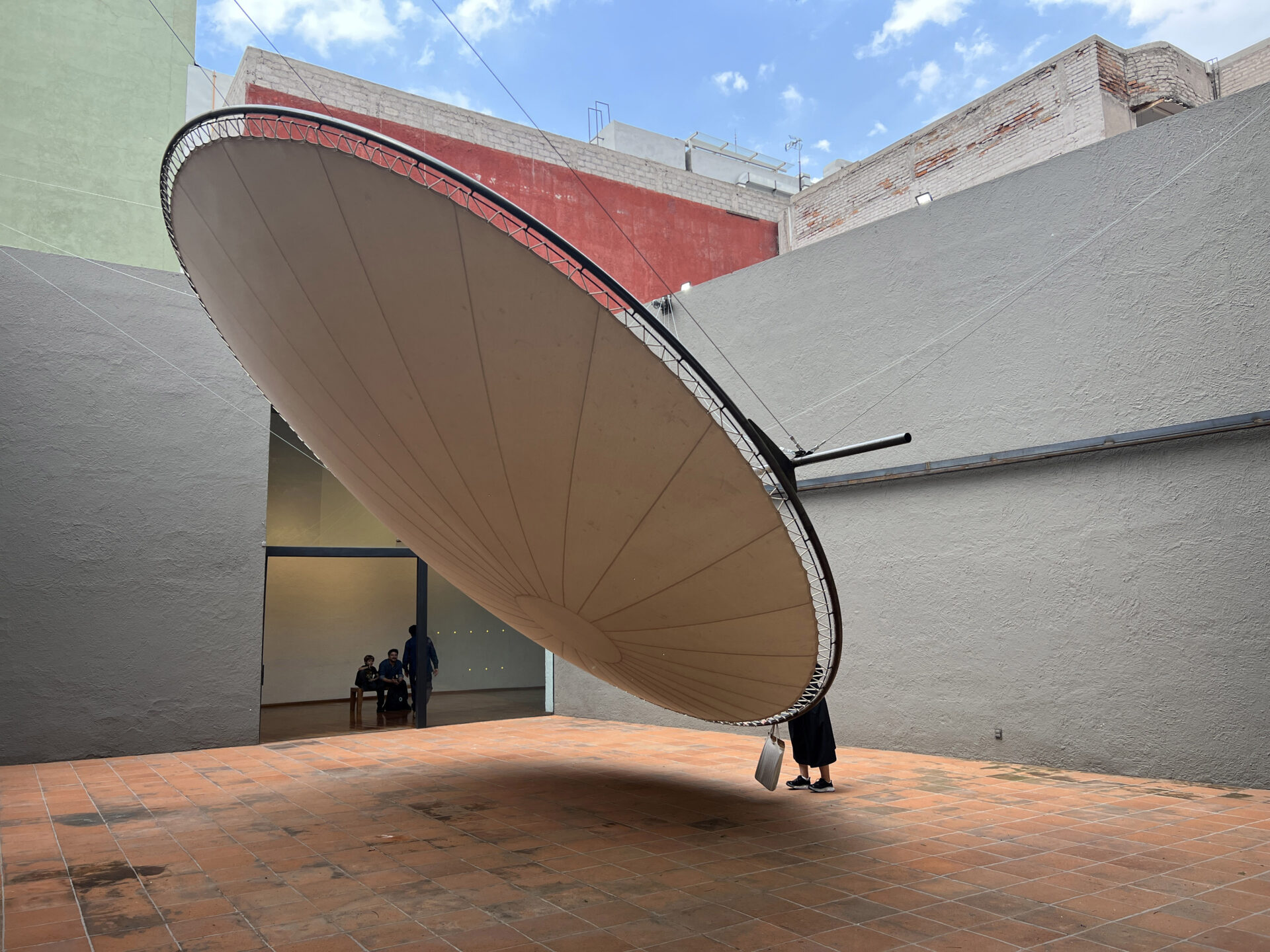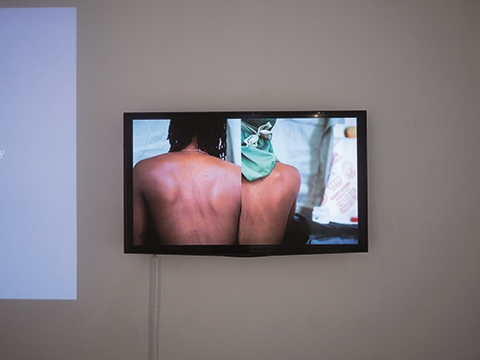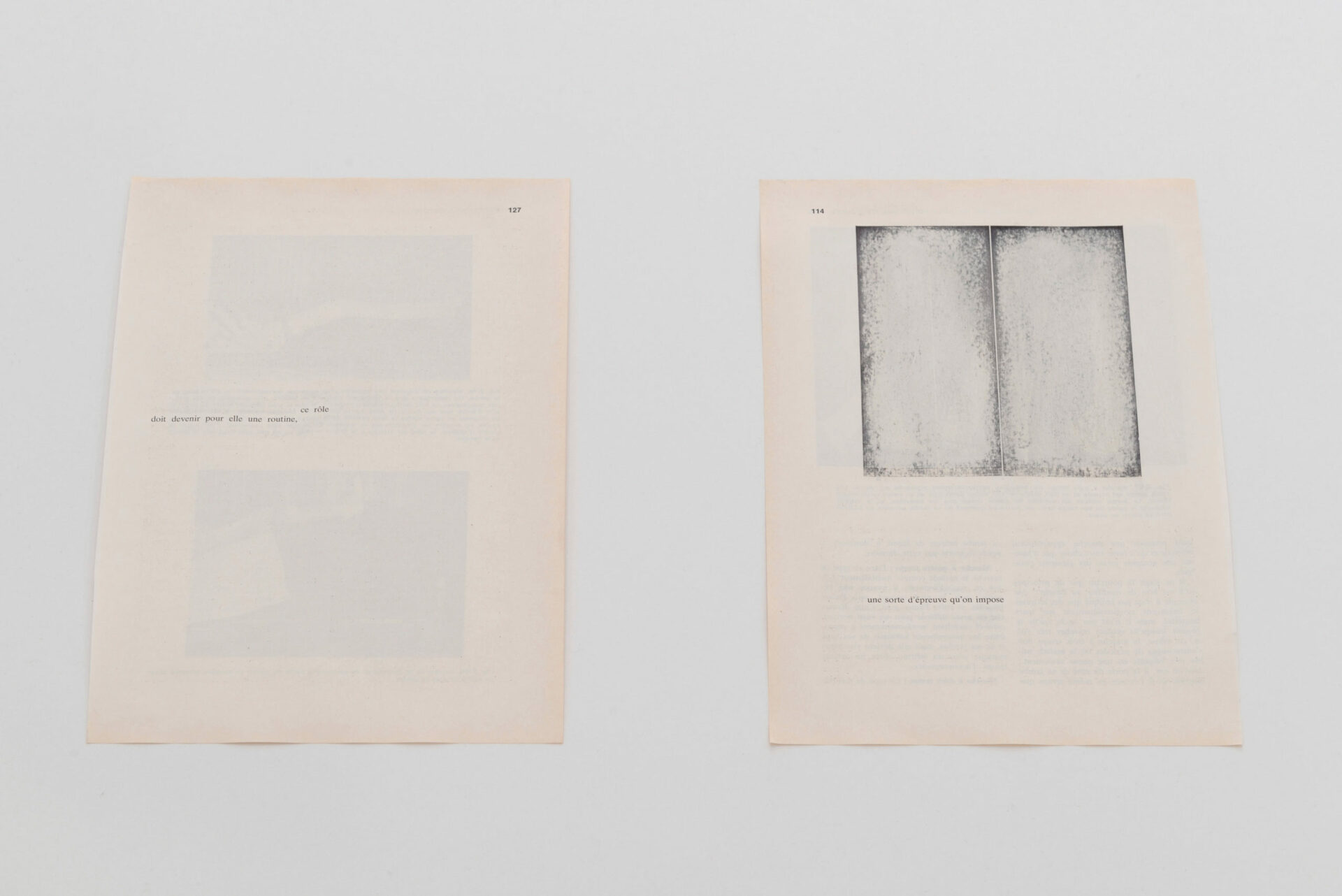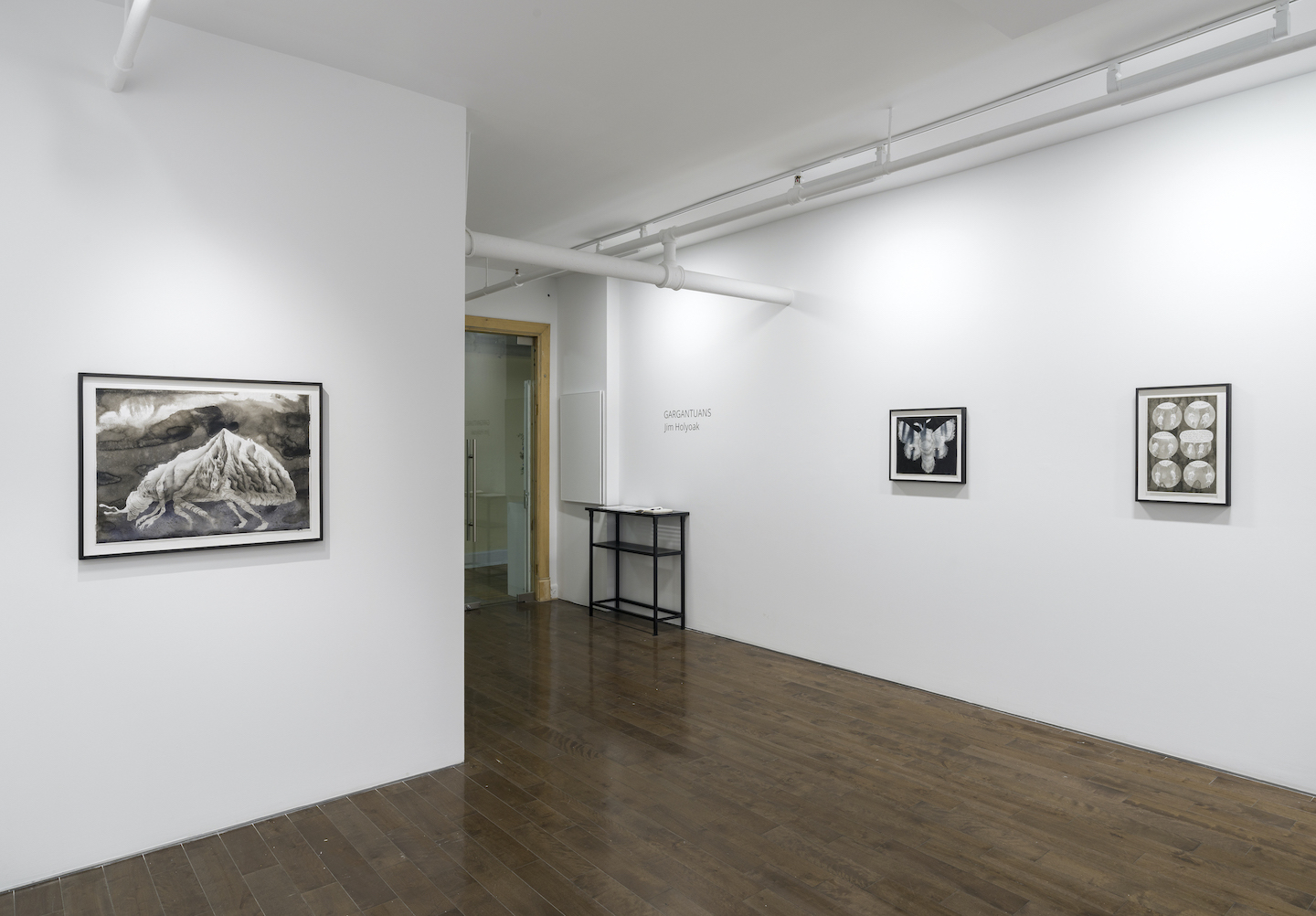
Mexico City, 2023.
Photo: Yam Lau & Kathleen Hearn
April 29–July 30, 2023
[En anglais]
Cuenco [Bowl], an architectural/sculptural work by the design team OCIO, is the winner of the Eco Pavilion competition sponsored by the Museo Experimental El Eco in Mexico City. Installed in the courtyard of El Eco, Cuenco is also the only work on the ground floor, with the remaining indoor spaces of this remarkable building purposely left unoccupied. Yet, these vacant spaces are neither inert nor ineffectual; they serve as both agents and receptacles that resonate with the kinetic potential of Cuenco. Here, art and architecture achieve a reciprocally illuminating accord, so that discussion of the one necessarily entails the other.
Museo Experimental El Eco is the work of artist/architect Mathias Goeritz. Of German origin, Goeritz settled in Mexico in 1949. El Eco is meant to exemplify what he termed “emotional architecture.” In a manifesto published a year prior to construction of the building, which opened in 1953, he positions his design principle against the paradigmatic functionalism of modern architecture and the excessive romanticism of Gaudí. Emotional architecture aspires to elevate “man” to a spiritual plane: “Only by receiving true emotions from architecture can man consider it again as an art.” His examples of such an elevated architecture include the pyramid, the Greek temple, and Romanesque and Gothic cathedrals. Goeritz’s concept of building-as-art is most eloquently demonstrated by the installation of two of his signature vertical monoliths: a black volume in the interior, which he called Scream, and a yellow volume in the courtyard conceived as a shaft of light. Eschewing function, these tall, free-standing volumes are mysterious articulations of dimensions that exceed the human. Seemingly uninvited, they simultaneously anchor and elevate the architecture. I cannot help but compare them with the monolith in 2001: A Space Odyssey, Stanley Kubrick’s sci-fi epic made in 1968. The gambit of El Eco is indeed simple: two vertical monoliths, one intervening in the exhibition space, augmented by a long entrance passage (a horizontal negative monolith?), and the other intervening in a courtyard that adjoins an exhibition space of roughly the same dimensions. Wall treatments, differing in surface and colour throughout, imbue the architectural complex with rhymtical intensity and liveliness. Indeed, El Eco is a concise achievement of architecture that elevates and enchants.
Créez-vous un compte gratuit ou connectez-vous pour lire la rubrique complète !
Mon Compte

